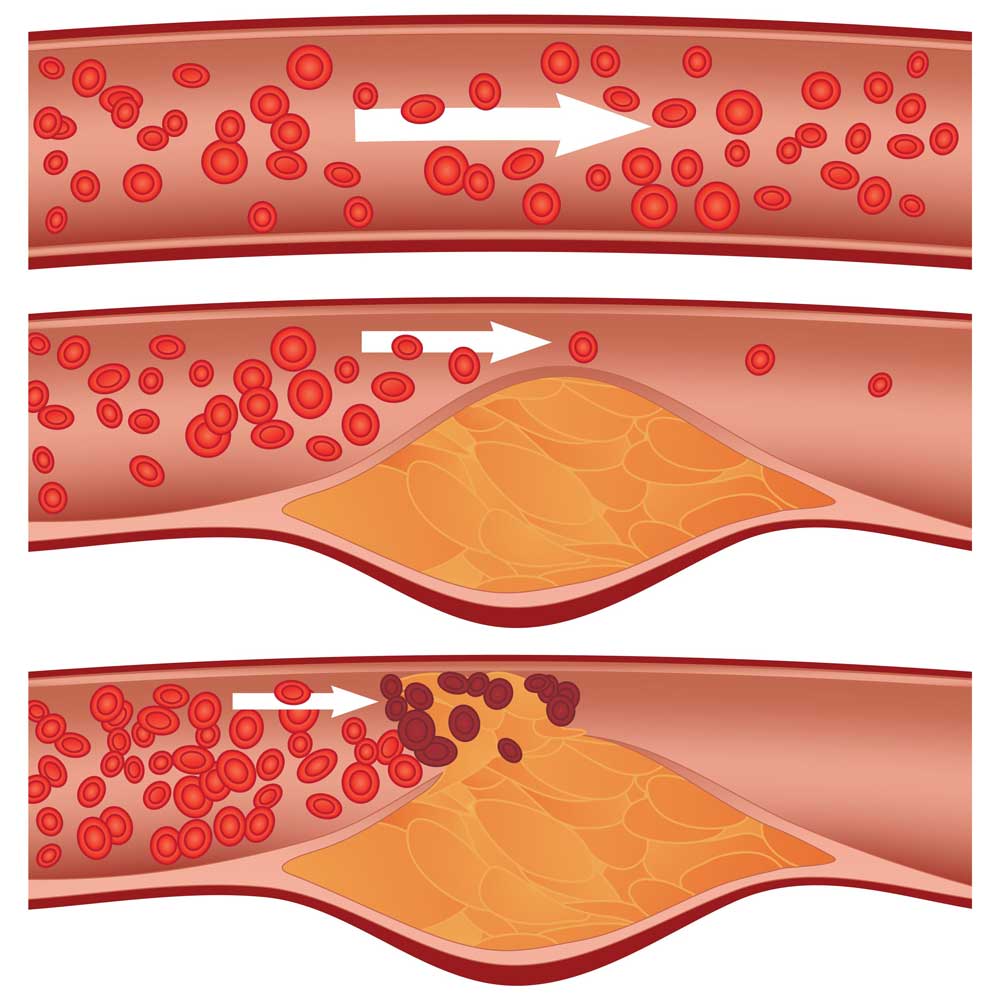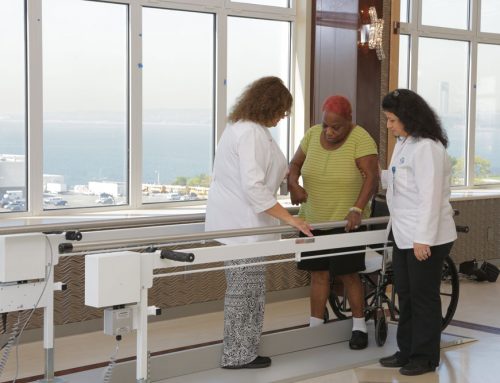Arteries are internal tubes that transport oxygen-rich blood and nutrients from your heart to the rest of your body. Though they are initially smooth inside, plaque buildup can reduce or halt blood flow. That blockage, called atherosclerosis, can lead to serious health issues, like hypertension, stroke, or heart attack. So, how long can you live with blocked arteries?
Well, there is no set timeframe when it comes to a person’s lifespan when their arteries become clogged. Medical treatments are available after the blockage is discovered to increase blood flow and prevent further complications. Lifestyle changes, such as a healthy diet, exercise, and stress management are also factors. Let’s take a closer look at how atherosclerosis affects life expectancy.
Cardiac rehabilitation may help tremendously. It involves health education, stress managements and emotional support, exercise program and healthy diet.
General lifestyle changes are also factors. Let’s take a closer look at how atherosclerosis affects life expectancy.

How Long Can You Live With Blocked Arteries
Arteries don’t become clogged overnight. It can take decades for the blockage to reach the point where it’s noticed. In fact, many people don’t detect the narrowing of their arteries until it leads to severe complications.
For some individuals, there aren’t even any symptoms until the clog blocks at least 70% of the artery. At this point, they may experience chest pain, heart palpitations, shortness of breath, sweating, nausea, dizziness, or weakness. There could also be a few other symptoms, depending on the location of the blockage.
For instance, when the arteries carrying blood to the heart become blocked, it leads to coronary artery disease. The most common symptoms of this condition are chest pain or shortness of breath. Unfortunately, for some individuals, there are no noticeable symptoms until a stroke occurs, which could be fatal.
Carotid artery disease is the result of blocked arteries in the sides of the neck. When they become too narrow for blood to flow properly, a stroke is the result. As well as the common symptoms, this type of blockage could also cause a few others. These include weakness, numbness, or inability to move one side of the body, slurring, or partial loss of vision.
Peripheral artery disease is caused by the buildup of plaque in the arteries carrying blood to the legs. The loss of oxygen can cause pain, numbness, infection, reduced healing, coldness, and gangrene in the legs and feet. There could also be no symptoms at all.
Regardless of where the blocked arteries are located, the lifespan of those with the condition can vary. It depends on a few factors, including genetics, lifestyle, diet, stress level, and underlying health conditions. The healthier the individual, the slower arteries will narrow, and the longer their lifespan will be. Others may only have a few years before the clogged artery causes further complications, including death.
Can you help to reverse clogged arteries?
Yes, it is possible to reverse clogged arteries with the correct alterations to an individual’s lifestyle. According to preliminary studies, altering certain risk factors can actually decrease atherosclerosis. The main factors include proper exercise and a cardiac diet that reduces cholesterol levels.
Eliminating other risk factors is also beneficial, including quitting smoking and healthy stress management. Though you likely won’t eliminate plaque deposits, such alterations can increase how long you can live with blocked arteries.
This content comprises informative and educational resources only and can not be considered as a substitute for professional health or medical guidance. Reliance on any information provided in this article is solely at your own risk. If you have any inquiries or apprehensions about your medical condition or health goals, talk with a licensed physician or healthcare provider.






Very educative
I just received bad news from my vascular surgeon that, I have both arteries completely clogged, im quite worried,
i have type2 diabetic, lymphdema, I had a t a v r, surgery last year, and 6 years ago had a nother operation aneurysm on abdominal aorta, and other ailments, my med s are lantus,novolog, metformmin, atorvastin,lisinopril,warfarin 10 mg, jardiance, vitamin d 2.25 mg,
I am praying for you.
How are you now? Because my grandmother is facing the same problem
I hope your doing OK and are getting better if not just know somone cares about you and hopes you live
Hey Bob, are you still with us? I wanted to mention about your drugs first of all I would’ve got off that metformin. And Warfarin the warfarin will bother your stomach, and metformin is horrible for you. However, my doctor told me that I’m only using 40% of one artery.
Will keep you in prayer. May God touch your body healing it . Stay strong and positive . This helps a lot . Try not to stress as this is truly the last thing you need . If you do smoke or drink alcohol don’t quit suddenly but slow down as every little change helps .
Sorry to hear this. I have just been diagnosed with coronary artery disease. There is heart disease in my Family. My Father had angina and my Mother had Vascular. They have both passed away . My Father had a heart attack my mother died in her sleep due to vascular. I will say prayers. We need to look after our heart as life is to short. Blessings to everyone
Bob I’m praying for you I hope you are well at this time I’m going through the same thing with mutable heart attacks and strokes just got home and still in pain but I’m afraid to let the doctor try and open up the artery first time it didn’t work but because of the chest pain they want to try again they said it is high risk for me so I’m not even sure which way to turn but the chest pain is getting bad I will keep you and everyone that is going through this in my prayers 🙏🏽❤️
Are you alrightt sir?
I am also epericing heart blockage. Now they are fisten to go in and put another in. So I am praying that God can heal my heart. So I’m trying to find the right diet.
I’m praying for you. God has the final say, over us all. 🙏🏼🙏🏼🙏🏼
I’m praying for everyone who has cardiovascular or clogged arteries. Please put all your trust in God, and take omega 3 oils and Sunflower lecithin.
Prayers
Hod bless I just found out mine our blocked I have high cholesterol and very high blood pressure and I’m very had very bad anxiety. I’ve never smoked the day in my life.
Hola. Me dijo mi Dra. Ayer que tengo problemas en mi pierna izquierda por mala circulación , tengo una arteria obstruida y eso causa mucha pesadez en mi pierna y muchas veces se entume ! Por favor díganme que les ha funcionado a ustedes. Tengo miedo ! Por el momento me dejaron medias de compresión y si eso no ayuda me harán un procedimiento quirúrgico. Que alimentación funciona ? Toda mi niñez y juventud jugué basquetbol, no se en que momento me descuidé. Si les ha funcionado algo para mejorar. Déjenme saber por favor.
I started getting blockages when I was 57 years old (13 years ago) I was in top shape worked out everyday weighed 122 pounds ate very healthy and had 2 blockages in the APEX (widow maker) one was 89% blocked and the other one was 99% blocked, by the Grace of God they found the blockages after a heart echo was negative, a cat scan was negative, nuclear stress test showed 1 blockage. They took me into the heart cath and found the other very deadly blockage, I threw blood clots and my body tried to reject the stents, it was a ver rough time in my life but I healed and got strong. Then in Feb. 2024 I started to get extremely horrible heartburn. I could not get rid of it. So I put it with that for almost a month and decided I needed help so I went to the emergency room and my cardiologist saw me and took me into the heart Cath lab the next day. My right coronary artery was 60% clogged just on one side, but it was very long clog Took up most of my artery so this year I got my third stent. I have always been the picture of health, but I keep having trouble blocking. Mine is hereditary no matter what I do it won’t stop. I inherited that from my father side of the family now I’m 70 and I don’t know if I can go through what I went through 13 years ago.
Hi Donna , My bf is 58 and has suffered 2 strokes in less than 6 months. He is otherwise ok however he has plague blockage in both sides of his neck with his left being more severe. 2 doctors refused to do stenting for him citing the risk of doing it is higher than not doing it. I read online stenting is minimally invasive procedure so I don’t know why the doctors refused to do it for him. I don’t know if I should continue to find a doctor who is willing to do it for him.